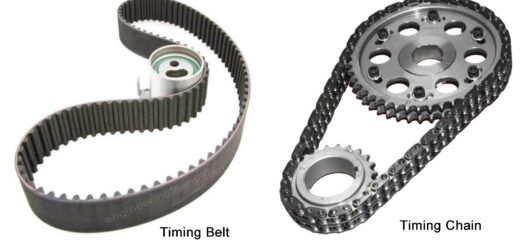What is Excavator? Types of Excavator, Uses, Parts & Application [with Pictures]

What is Excavator?
What is Excavator? Types of Excavator, Uses, Parts & Application :- Excavators are referred to as those mechanical equipment which are used in heavy construction and are found consisting of a boom, dipper, bucket and various other cab on a rotating platform which is also referred to as the house. Excavators are usually the ones which are found to be operated hydraulically. The entire movement along with the function of a hydraulic excavator is known to be accomplished by the help of a hydraulic fluid which is observed to be accompanied with the hydraulic cylinders as well as hydraulic motors.
Due to the effect of linear actuation of hydraulic cylinders, there are various modes of operation which is found to be fundamentally different that are the ones which are found to be cable-operated excavators which work by using the winches as well as steel ropes in order to accomplish the movements successfully.
Types of Excavators
1. Backhoe Excavators: ( Types of Excavator )

A backhoe is referred to as an excavation machine which usually includes the standard tractor that is usually found having a base accompanied with the supports which has a digging bucket at one end of a jointed two-part arm. At the opposite side of such backhoe you will find a front loader attachment which is technically termed as a backhoe loader. Therefore the seat swivels are found to have movements around 360 degrees in order to allow the operator to face whichever side that is being used at that particular time.
There are certain parts of the backhoe arm that are found to be attached to the tractor and are thus termed as the boom, and the segment that is responsible for holding the digger bucket is referred to as the dipper or the dipper-stick. The pivot that is found responsible to connect the boom and dipper is referred to as the king-post.
The front loader can be replaced with varying brooms, plows, as well as forklifts depending upon the requirement. There are cases in which a backhoe is responsible for being served as a crane by simply looping the straps of a lifted object over the dipper stick.
Backhoe Loaders
Backhoe excavators can also be stated as the backhoe loaders that are found to be accompanied along with an excavator boom which is found to be attached at the back of the machine usually. Looking at the front of the backhoe, you will be able to see a large bucket or a blade which is used in order to push, level and also move the soil and other materials. The excavator arm at the rear of the backhoe functions is found to be working in the same way in terms of standard excavator, except rotating it in a complete 360 degrees whereas the backhoes are found to rotate at a maximum angle of 200 degrees.
There are some of the main uses for an excavator which are found having digging trenches, holes, and foundations that can provide the power to conduct such types of tasks with more ease and effectiveness as compared to any other piece of heavy equipment on the market. So, now scrolling down you can have a look at some of the most popular types of excavators.
2. Crawler Excavators: ( Types of Excavator )
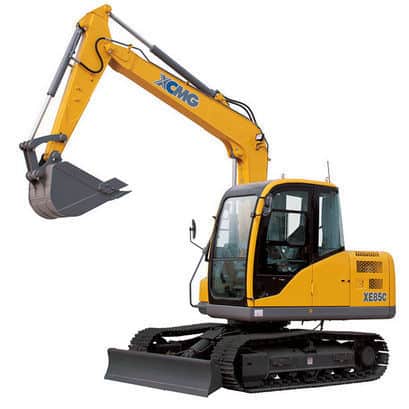
A crawler excavator is also known as a crawling digger which is referred to as a tracked vehicle that is especially designed to in order to dig or grade, or move earth and large objects in order to classify it by the types of modes of locomotion. There are various types of excavators which are usually found having some of the inclusions like wheeled, walker, towed and rail excavators.
These are the excavators which are found to be related to the tracked tanks which are widely used by the armies. These are some of the crawlers which are found moving upon the same rotating wheel systems and at the same time are found having the ability to dig, pick or transport the excavated materials as they proceed. There are some components that are found having a major crawler chassis, rotor support, the central swivel joints, turntables, the device weight, the panel, cab and air conditioners.
The crawler excavators are used at the construction sites like digging the trenches, holes and foundations, as well as for handling materials, moving earth, demolition, dredging, etc. There are numerous other attachments that are observed and are adapted by the crawler of the excavator that is used for the purposes of boring, ripping, crushing, etc.
3. Dragline Excavators: ( Types of Excavator )
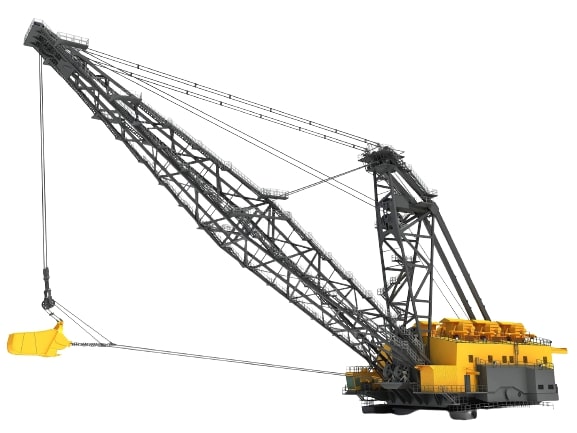
A dragline excavator is referred to as a piece of heavy equipment which is mostly used in the civil engineering as well as in the Surface mining fields. Draglines are usually the ones which are found falling into two main categories:
- These are the ones which are based on the standard, lifting cranes, and the heavy units that are found to be built on-site. Most of the crawler cranes accompanied with an added winch drum on the front, is found acting as a dragline.
- The units which seem to be similar to the other cranes are found to be designed in order to dismantle and transport over the road on the flatbed trailers. The draglines are usually the ones which are found to be used in civil engineering sectors that are almost found in the smaller, crane types. It is important to know that these types of excavators are mainly used for the purpose of road construction, port construction, pond and canal dredging, and as pile driving rigs.
4. Wheeled Excavators: ( Types of Excavator )
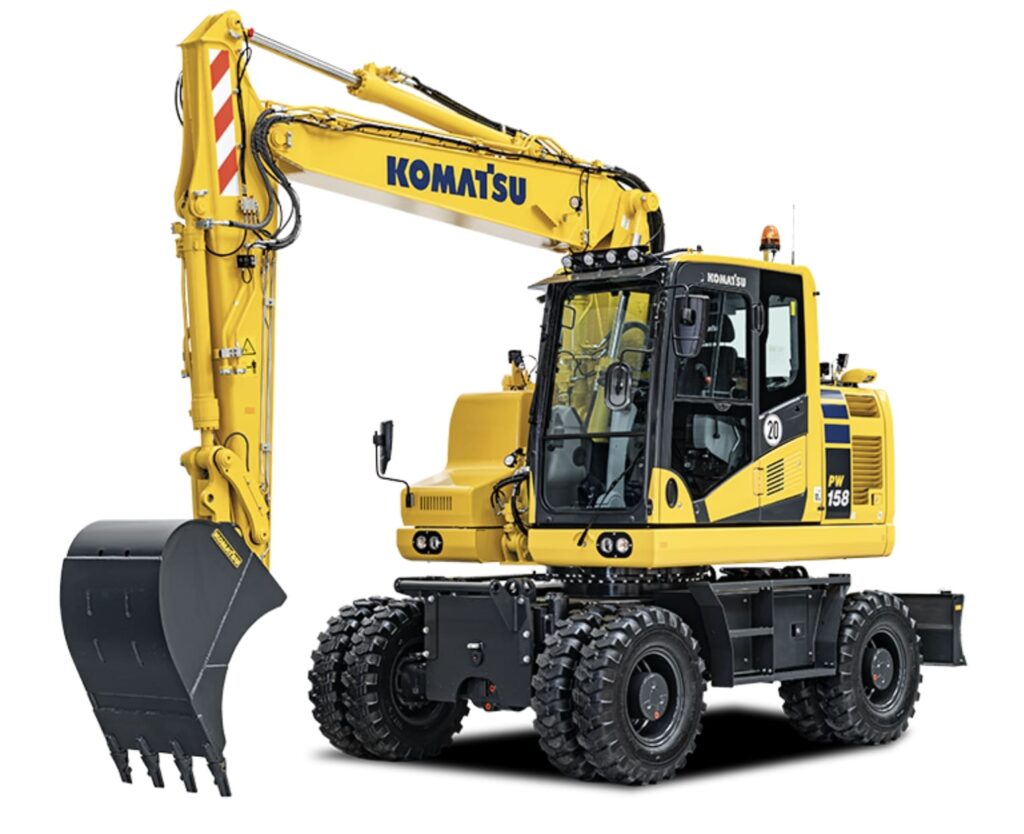
Wheeled excavators are referred to as those excavators which are found to be as powerful and productive as similar to the tracked excavators. Wheeled excavators are found working similarly to a really well roadside work as they are comparatively more manoeuvrable in reference to the tracked excavators.
Zero-tail swing models are in resurgence as they are found to work in a single lane without facing any technical problem. The only drawback is that they are found having no traction off road, whereas, as a tracked machine is found being present. In this situation any uneven ground can be proved to be a problem for them, too. Usually the wheeled excavators are found to be used for the purpose of wide variety of applications like the junkyard work, road work, material handling, waste handling, and various other applications of such type.
Whenever there is a need to suck up the loose debris and litter there are various types of debris, it can be snagged on the teeth. The earth needs to be sucked out as it might be loosened first along with a compressed-air lance, or a powerful water jet.
5. Skid Steer Excavators: ( Types of Excavator )
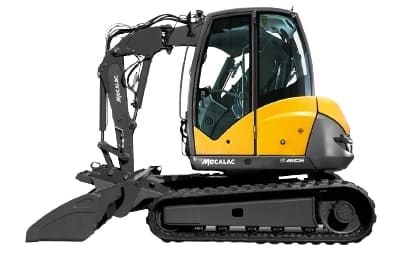
A skid steer excavator is referred to as a small, rigid-frame, engine-powered by the machine accompanied with the lifted arms that are found using an attachment in a wide variety of labour-saving tools. Skid-steer are mostly known to be the typical four-wheel vehicles that are accompanied with the wheels that are found to be mechanically locked in synchronization on each side where the left-side drive wheels is seen to be driven independently of the right-side drive wheels.
It is observed that the wheels are found having no separate steering mechanism which also holds a fixed straight alignment on the body of the machine. Turning is found to be accomplished by the differential steering, wherein the left as well as right wheel pairs are found to be operated at the varying speeds so the machine turns by either skidding or dragging its fixed-orientation wheels across the ground.
A skid-steer at times is found to be used at places of large excavator by simply digging a hole from the inside. The skid loader is responsible for first digging a ramp that can lead to an edge of the desired excavation. These are the types of excavators which uses the ramp in order to carry the material out of the hole. The skid loader is found to reshape the ramp in order to make it steeper as well as longer as the excavation is observed to be deepening. There are various other applications that can be found consisting of transporting raw materials around the job site, or assisting in the rough grading process.
6. Long Reach Excavators: ( Types of Excavator )

Long reach machines are referred to as those machines which are usually not found to be suitable for the high side twisting forces that are found to be exerted using demolition attachments and other many demolition machines which are found to be unstable at large radius.
So such types of excavators are often assisted accompanied with an electronic cut off device that is found restricting the operating radius of the machine. All the long reaching machines are particularly known and found useful for the purpose of dredging operations. The name clearly suggests, a long reach excavator which is found featuring a very lengthier arm along with the boom sections. The design is observed to be very better for the operation in almost all the hard-to-reach locations. It is important to know that the extendable arm of an excavator of this type can reach over 100 feet horizontally.
There seems to be a development in such types of machines which is usually named as high reach excavator and also as the ultra-high reach demolition excavators. The high reach excavators are found responsible for having a development along with the excavator which are mostly found to be accompanied with an especially long boom arm, which is initially used for the purpose of demolition.
Other than the excavation of ditches, the high reach excavator is commonly found to be designed in order to reach the upper stories of the buildings that are usually being demolished and which also pulls down the structure in a controlled fashion.
Conclusion
These are the excavators which are usually found having a largely replaced wrecking ball as the primary tool for fulfilling the purpose of demolition. Ultra high reach demolition excavators (UHD) are referred to as the demolition excavators which are found having around several tens of meters of reach. These are found reaching up to 48 metres in terms of operation.
7. Mini Excavators: ( Types of Excavator )
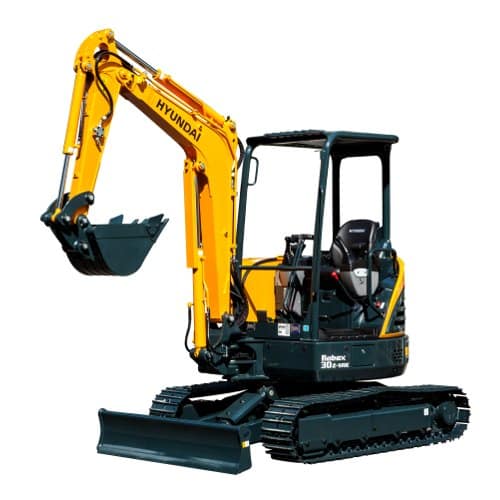
A mini excavator is referred to as a tracked or wheeled vehicle which is found having an approximate operating weight from approximately 0.7 to 8.5 tonnes. Such types of excavators are generally those which are found including a standard backfill blade that usually features an independent boom swing. Mini excavators are found to track the machines usually of the same size as a typical skid-steer whereas they are found to serve a very different purpose.
These types of excavators are found including a very heavy-duty arm which usually interfaces along with a very wide range of attachments and are found having a mounted blade. The machine which is to be used for a project is usually less weighted. The approximate weight is around 10,000 pounds, or 5 tons whereas there is no such strict rule which needs to be followed regarding this.
8. Power Shovel Excavators: ( Types of Excavator )
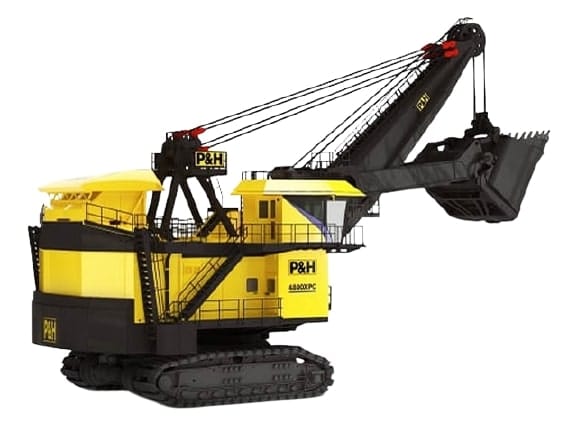
Power shovel is referred to as that excavator which is usually found consisting of a revolving deck accompanied with a power plant driving as well as controlling the mechanisms, sometimes a counterweight as well as in the front attachment like a boom or crane that will support a handle accompanied with a digger at the end. The whole mechanism is found to be mounted on a base platform accompanied with either tracks or wheels. Power shovels are referred to as those which are usually found to be principle for the excavation as well as for the removal of debris.
All the cables which are found to be operated mechanically, the shovels are responsible for applying the engine power in order to the base as well as to the attachment by the means of clutches, gears, shafts, winch drums, and cable.
9. Amphibious Excavators: ( Types of Excavator )
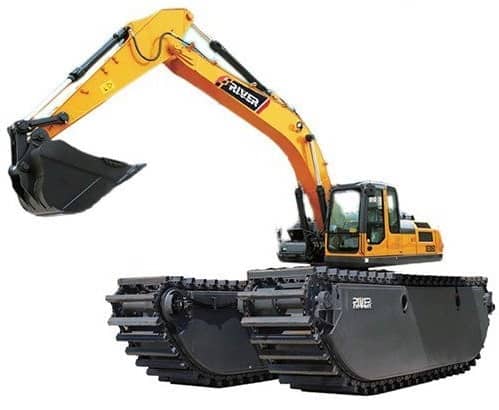
An amphibious excavator is referred to as that excavator which known to be a type of excavator that is able to perform dredging while afloat in shallow water continues. An amphibious excavator is used to get better results for the purpose of removing clay that is found to be high in salt, clearing silted channels, swampland operation, and shallow water operation as compared to the traditional barge-mounted dredgers. The main application of such an excavator is to fulfil the drenching work.
10. Suction Excavators: ( Types of Excavator )
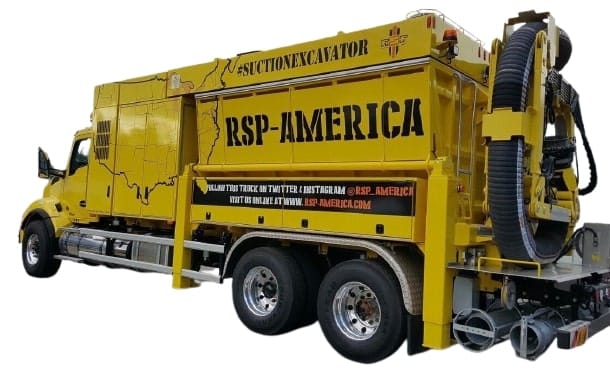
A suction excavator is referred to as the ones which is usually found producing powerful suctions using a very wide pipe which is found to measure up to 30 centimetres or 1 ft. in terms of its diameter. The suction inlet air speed can be reached up to 100 meters per second or it must be converted into 220 mph. The construction of such an excavator is found to be quite similar to a vacuum truck that too with a wider suction hose and an even powerful suction.
The suction is found having a nozzle that may have commonly two handles for the operator to grasp. Those handles are responsible for enabling a collar which needs to be rotated, thus uncovering the release openings of the suction along with the grilles over it as the release suction. This will make the suction nozzle to drop the objects which seem to be too big to enter the tube. The end of such tubes would definitely be toothed. This is what helps a lot to cut the earth whenever it is found being used for the purpose of excavation.
Different Type of Excavator Attachments
The design of an excavator is responsible for allowing the construction equipment in order to be used for various projects at a same time. Meanwhile the hydraulic excavators are also found having the capabilities to expand it far from the excavation tasks accompanied with the buckets. The advent of any hydraulic-powered attachments like a breaker, a grapple or an auger, the excavator is found to be using it frequently in various applications other than the excavation. The attachments are found consisting of all those attachments which are responsible for providing the digging as well as holding functionalities. Adding to this it is important to know that it also includes a rotating platform and wheels which are responsible for providing the necessary mobility in order to lift and remove the debris.
Parts of Excavator
- Bucket
- Bucket Cylinder
- Boom
- Boom Cylinder
- Bottom Roller[s]
- Engine
- Car Body
- Cab, ROPS
- Dipper, Arm, Stick, Crowd Cylinder
- Main Hydraulic Pump
- Main Control Valve
- H-Link
- Sprocket
- Side Link, Dog Bones
- Final Drive, Reduction Assembly
- Track Pad, Grouser Pad
- Track Chain, Rails
- Swing Reducer, Swing Drive & Motor
- Slew Ring, Swing Gear, Swing Bearing
- Track Adjuster, Tensioner
Applications of Excavator
Excavators are referred to as those equipment which are usually found to be applied to a variety of contractor and to fulfil the industrial needs, mining, road construction, building construction, and demolitions. Not just this, there are various other applications of excavators which are as follows:
- Digging trenches, holes, foundations
- Handling of material
- Brush cutting by hydraulic saw
- Forestry work and mulching
- Construction
- Demolition using hydraulic claw, cutter and breaker attachments
- General grading
- Landscaping
- Mining
- River dredging
- Pile driver
- Driving piles, in conjunction
- Drilling shafts for footings and rock blasting
